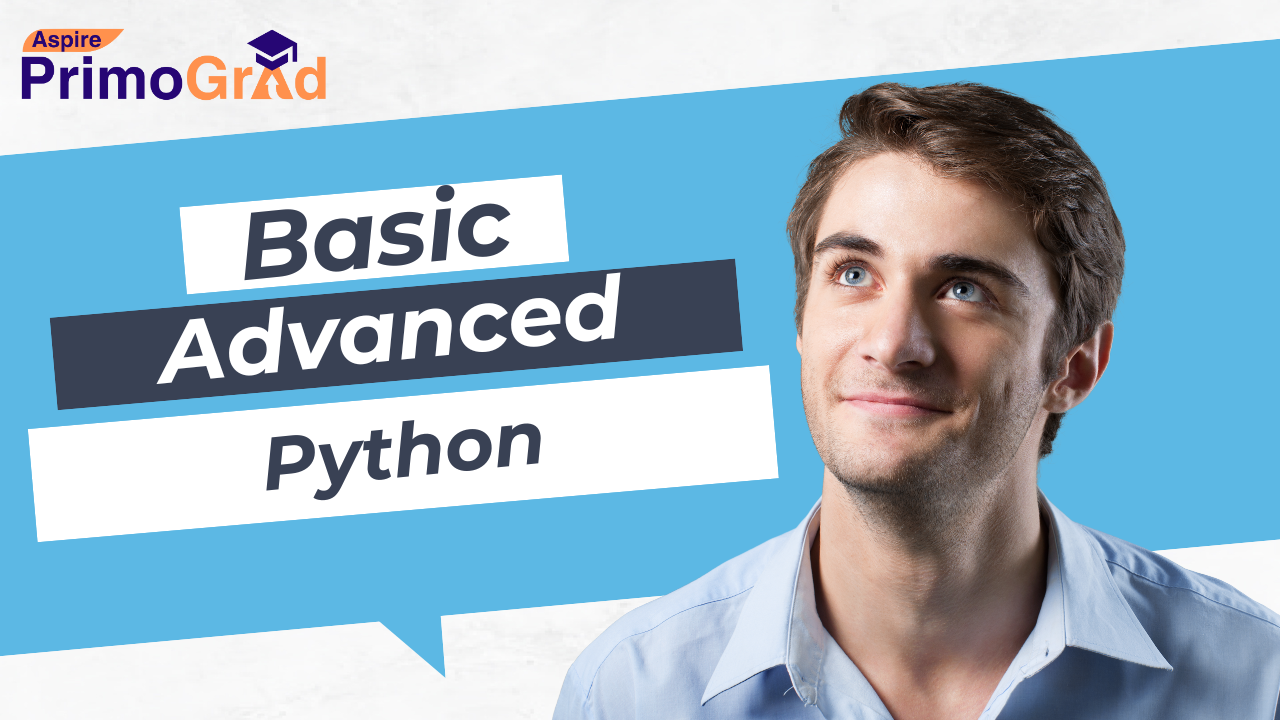About this course
Explore comprehensive Python programming concepts with structured lectures on data manipulation, file handling, automation, APIs, OOP, data visualization, and web scraping—perfect for beginners and aspiring developers.
Comments (0)
This lecture will cover the installation, the program's basic syntax, and how to execute your first program.
In this lecture, we will learn the variables and their types and convert them from one type to another by using typecasting( using int(), etc. ) and how to perform some Arithmetic operations on them.
Try to practice on some examples from online sources and the lecture material will be provided at the end of the module.
In this lecture, we will learn how to use conditions to direct the flow of the program using control structures.
In this lecture, we will learn about the automation of the programs using the loops that help us run the repetitive tasks even with some modifications according to our request.
In this lecture, we will learn about functions. These functions are the basic blocks of programs that we can implement wherever we need to or repeatedly.
The return keyword in the function will return some value or any other that we can store or operate outside the function.
In this lecture, we will learn how to store multiple data in a single location or variable. This is the fundamental concept of the Data Structures and Algorithms as all their implementation uses the list datatype.
This is a brief about the List and tuple with the basic operations. I'll be attaching the advanced concepts at the end of the module.
In this lecture, we will learn about the Sets, Dictionaries, and basic operations on them. These would be helpful to make them used as databases and a Dictionary is a direct copy of the document databases like MongoDB except some operations.
In this lecture, we dive deep into string manipulation in Python, an essential skill for any programmer. Strings are one of the most commonly used data types, and understanding how to manipulate them effectively can help you easily solve real-world problems.
Ever wished your Python code could do more with less effort? Say hello to modules—Python’s way of giving you superpowers! In this lecture, we’ll explore how to import ready-made modules (because why reinvent the wheel?) and even create your own custom modules (because sometimes, you need a cooler wheel). Get ready to unlock the magic of reusable code with a sprinkle of fun and simplicity!
In this lecture, we’re diving into the basics of Object-Oriented Programming (OOP)—where everything revolves around objects! Learn how to create classes (blueprints), work with objects (things made from the blueprints), and use methods (actions they can perform). Don’t worry, it’s simpler than it sounds—we’re keeping it light, practical, and beginner-friendly!
Let’s bring your objects to life! In this lecture, we’ll cover the essentials of attributes (what objects have) and methods (what objects can do). You’ll learn how to create instance variables that make each object unique and define class methods to make them useful. It’s like giving your objects a personality—and yes, it’s as fun as it sounds!
In this lecture, we will learn how to extend the functionality of classes using inheritance and the hierarchy of the classes.
In this lecture, we will learn about Polymorphism which helps us to implement the same method in different forms.
In this lecture, we will learn about Encapsulation which will help us to hide data to a particular extent and also help to bind the data together.
In this lecture, we will learn about the Abstract classes and methods. These help us to create a blueprint to explain what to do rather than how to do it. The part "How to Do" is implemented by the child classes that implement the Abstract class.
In this lecture, we will learn about the special dunder methods to extend the functionality of the class objects to perform the operations on the objects rather than creating new ones for everything.
This lecture will teach us how to handle compile-time and run-time errors.
This lecture will teach you how to perform the read and write operations on files using some Python script.
This lecture will teach you about a new data structure called Dataframe and series which are embedded in the Python module called Pandas.
This lecture will teach you how to clean the datasets that contain raw and missing data using the pandas module.
This lecture will teach you how to perform advanced data analysis using Pandas, including grouping data with groupby, merging datasets efficiently, and creating pivot tables for insightful data summarization.
This lecture will teach you the fundamentals of NumPy, including how to create arrays, perform mathematical operations, and reshape arrays for efficient data manipulation.
This lecture will teach you the basics of Matplotlib, including how to create line charts, bar charts, and scatter plots to visualize data effectively.
This lecture will teach you how to use Seaborn for advanced data visualization, including creating heatmaps, pair plots, and other insightful statistical graphics.
This lecture will introduce you to Flask and Django, two powerful web frameworks for Python. You will learn how to set up a basic web server, define routes, and handle requests efficiently. By the end, you’ll have a foundational understanding of building web applications using these frameworks.
This lecture will teach you how to build RESTful APIs using Flask or Django, enabling communication between applications. You will learn how to define API endpoints, handle requests, and return data in JSON format. By the end, you’ll be able to create and deploy your own APIs for web and mobile applications.
This lecture will teach you how to handle files in Python, focusing on reading and writing JSON and CSV files for data storage. You will learn how to efficiently process structured data, parse JSON objects, and work with CSV files using Python's built-in modules and Pandas. By the end, you’ll be able to manage and manipulate file-based data effectively.
This lecture will introduce you to web scraping using BeautifulSoup and the `requests` library to extract data from websites. You will learn how to send HTTP requests, parse HTML content, and navigate webpage structures to retrieve useful information. By the end, you’ll be able to automate data extraction for various applications.
This lecture will teach you how to handle dynamic web content using Selenium for automated browsing and data extraction. You will learn how to interact with web pages, navigate through elements, and extract data from sites that rely on JavaScript for content loading. By the end, you’ll be able to automate web interactions and scrape dynamic data efficiently.
This lecture will teach you how to send automated emails using Python and the SMTP protocol. You will learn how to compose and send emails, attach files, and customize messages for different recipients. By the end, you’ll be able to automate email notifications, reports, and alerts efficiently.
This lecture will teach you how to create complex and insightful data visualizations to effectively present data findings. You will learn how to use libraries like Matplotlib and Seaborn to generate advanced charts, including histograms, box plots, and multi-variable visualizations. By the end, you’ll be able to transform raw data into meaningful visual representations for analysis and decision-making.
This lecture will teach you how to fetch and process data from external APIs using Python. You will learn how to send API requests, handle responses in JSON format, and integrate API data into your applications. By the end, you’ll be able to work with various web APIs to retrieve and utilize real-time data efficiently.
This lecture will teach you how to automate file handling tasks using Python, making file organization and management more efficient. You will learn how to create scripts for renaming, moving, deleting, and sorting files based on specific criteria. By the end, you’ll be able to streamline file operations and improve workflow automation.
This lecture will teach you how to automate data cleaning and preprocessing for large datasets using Python. You will learn how to handle missing values, remove duplicates, standardize data formats, and apply transformations efficiently. By the end, you’ll be able to build automated pipelines to clean and prepare data for analysis or machine learning.
This lecture will teach you how to automate repetitive data analysis tasks using batch processing in Python. You will learn how to process large datasets efficiently, schedule automated workflows, and optimize performance for handling bulk data operations. By the end, you’ll be able to streamline data analysis and improve workflow efficiency.









